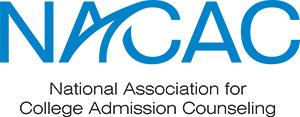Ready to apply to college but don't know the difference between early action, early decision, and regular decision? Here's the difference between the three.
At Collegewise, conversations about college admissions have evolved over the years. As counselors, when we talk with students about applying to college, we no longer just talk about where to apply—but also when to apply.
There are many different application deadlines—probably more than you even know of –, but in this blog post, we’ll tackle what I like to call the Big Three: Early Action, Early Decision, and Regular Decision, along with some of the lesser known application deadline dates in college admissions.
Table of Contents
- What is Regular Decision (RD)?
- What is Early Action (EA)?
- What is Restrictive Early Action (REA) or Single-Choice Early Action?
- What is Early Decision (ED)?
- What is Early Decision II (ED II)?
- What are Rolling Admissions?
- Other Special Deadlines to Consider
- Tips on How to Decide the Right Application Option
- Additional Resources
What is Regular Decision (RD)?
Regular Decision - maybe the most recognized decision plan - is a non-binding entrance plan, meaning that if you are admitted to a school through Regular Decision, you are not committed to attending. Regular Decision deadlines typically run anywhere from January 1st (or, kindly, a couple days after the New Year) through February 15th. Common practice is that students who apply RD will receive their admission decision by April 1st (often, sometime the last week in March), with May 1st being the date by which you have to pay your enrollment deposit and decide which college you will be attending in the fall.
Why Apply Regular Decision
- Because RD deadlines aren’t until January or February, students have a long runway to work on their applications.
- RD applications include 1st semester senior year grades; with their earlier deadlines, EA and ED applications don't. If you'd like your senior year grades to showcase an upward trajectory after a shaky start to school, it may be advantageous to apply in the RD round.
Why Not to Apply Regular Decision
- By the time RD decisions are released, some chunk of a school’s incoming class has been claimed by ED and EA admits.
- As the decision cycle wanes on, more admitted students continue to confirm their spots in the class, making Regular Decision, in some cases, much more competitive.
What is Early Action (EA)?
Think of Early Action as an earlier version of Regular Decision.
What’s the same: It’s a non-binding decision plan, so if you are admitted to a school EA, you still have time to decide where you want to go to school.
What’s different: The application deadline is earlier than Regular Decision’s--typically, November 1st, and you find out your decision sooner – a major advantage. Rather than waiting until April 1st, EA decisions are typically released in December or January.
Why Apply Early Action
- You finish and submit your applications by November 1st—hooray! Now you have more time to focus on schoolwork, activities, and all the things you’d rather be doing with your free time than working on applications and essays.
- You get your decision back earlier. If you're accepted, you can breathe a sigh of relief knowing that you got into a college, and if you didn’t, you at least know you gave it your best shot by applying early.
- Because your application is getting assessed earlier in the review process, there are more spots available in the class. (See point above from Regular Decision!)
Why Not to Apply Early Action
- Sometimes, colleges will defer Early Action applicants to the Regular Decision pool (check out this blog post for information on what to do if you’ve been deferred). This means that after reviewing your application in Early Action, the school believes that you are a compelling candidate although perhaps not be among the most competitive applicants they’ve seen so far—so they’ll reconsider your application in the Regular Decision pool.
(Reminder: It’s always important to finish senior year with a strong academic record, because even if colleges don’t see those grades at the time that they’re making a decision, the school you eventually enroll at will see your final high school transcript. They want to make sure you are still working hard and finish the year with an academic record that aligns with what they saw when they admitted you.)
What is Restrictive Early Action (REA) or Single-Choice Early Action?
This is the rarest decision plan, and you’ll only find it at a handful of colleges (six, to be exact). It walks and talks like a more restrictive version of Early Action, without the explicit commitment of Early Decision.
Let me break it down: if you apply to a school Restrictive Early Action (Caltech, Harvard, Princeton, Stanford, Notre Dame, or Yale), you cannot apply Early Decision, Early Action, or Restrictive Early Action to another private institution.
You can apply Early Action to another public institution. However, if you apply to a school REA and are admitted, you are not committed to attending. You can wait for other decisions to be returned to decide where you ultimately wish to enroll. *I will add an asterisk here for Georgetown, whose non-binding Early Action plan prohibits students from applying Early Decision elsewhere.
Why Apply Restrictive Early Action
- It can signal to a school that you’re really interested in them, even if the admissions bump from that signal is slight.
Why Not to Apply Restrictive Early Action
- Because you cannot apply Early Decision to another school when selecting REA, it can severely limit your chances of admission elsewhere. The margin of advantage when applying REA is minimal- it is much less of an advantage than applying to a school Early Decision. Many colleges that employ Restrictive Early Action will admit recruited athletes or legacy students through this plan, making it more competitive for students who do not fit these categories to be accepted REA.
Experience a simpler, stress-free way process and schedule a FREE consultation now.
What is Early Decision (ED)?
Early Decision is a big commitment to make because you can only apply to one school Early Decision, and if you are admitted, you must enroll. Because of that commitment, you have to submit an Early Decision Agreement form that not only acknowledges that you will enroll in the school if admitted, but that once you are admitted, you will withdraw all other applications to other schools.
(Important note: students who apply ED to a school can still submit Early Action, Rolling, and Regular Decision applications to other schools.)
Similar to Early Action, Early Decision deadlines are also November 1st, with schools turning around decisions by mid-December. You won’t have time to wait to receive other decisions because ED schools will ask you to confirm your enrollment pretty quickly after you’ve been admitted. While the other decision plans listed in this post give students until May 1st to make their enrollment deposit, ED school typically require your deposit within a matter of weeks. Important note: You don’t want to put all of your eggs in one basket with Early Decision. If you choose to apply to a school ED, you should still be working on and submitting applications to other schools for Early Action and/or Regular Decision in case you don’t get admitted to your ED school. And if you are admitted to your ED school in mid-December, congratulations! You’re done with the application process.
If you’re thinking about whether to apply to a school Early Decision, ask yourself a few questions:
- Do I want to attend this school more than any others I’ve applied to? You have to love it enough to choose it above all others and make that binding commitment.
Is it the right financial decision for you and your family? You won’t be able to compare admission and financial aid offers from other schools because you will have to put down your enrollment deposit before you hear back from other schools. So, be sure to have upfront, honest conversations about this before you apply. I recommend utilizing colleges’ Net Price Calculator to crunch the numbers and see what you can expect your financial aid package (if you’ve applied for financial aid) to be.
Why Apply Early Decision
- Colleges want to admit students who want to be there. The extent to which that factors into admission decisions really varies, but for those schools who offer it, Early Decision is the biggest form of demonstrated interest there is.
Why Not to Apply Early Decision
- Because of the binding nature, you should only apply to a school ED if you know you’re going to attend—you don’t want to be in a position where you have to commit to a school you don't actually want to go to.
- If you’re a student who is counting on your senior year grades to give you a boost, you might not want to apply Early Decision, since schools will only see your grades from 9th-11th with that November 1st deadline. 3. A small number of colleges have started to more regularly defer students from Early Decision to Regular Decision, elongating the waiting process.
What is Early Decision II (ED II)?
Some (but not all!) colleges that offer Early Decision also have a second binding deadline called Early Decision II (creative, I know).
ED II often has the same deadline date as Regular Decision, meaning it is typically sometime in January (though exceptions exist!). ED II mirrors ED I in that it is a binding commitment; you can only apply to one school ED II; it requires an ED Agreement form, signed by the student, parent or guardian, and school counselor that acknowledges that if you are admitted, you will enroll. Reasons to apply ED II could mirror those from applying Regular Decision- maybe you’re relying on senior year grades to give you a boost, or you’re planning to take a fall SAT or ACT and want that to be included in your application review (more on test-optional admissions here).
You could apply Early Decision to one school, not be admitted, and then choose to apply to another school ED II. When I worked in admissions at a school that offered ED II, we never made assumptions about a student’s reason for applying ED II—I'm sure a portion of those ED II applicants were not admitted elsewhere ED I. The reason doesn’t matter- the fact that you’re still applying for a binding decision plan is an indication of your interest and commitment.
What Are Rolling Admissions?
Rolling admission is by far the most popular decision plan among Common App schools. While other admission plans release all plan decisions on the same date, a rolling admission decision will be returned anywhere from 2-8 weeks after you submit your application. (Some colleges even turn around rolling decisions in a matter of days!) So, decisions are released on a continual basis throughout the year until the college’s incoming class is filled. For this reason, it can be advantageous to apply early in the cycle. I’ve had students receive rolling admission decisions in August, before their senior year of high school officially started!
Other Special Deadlines to Consider
This can look different from school to school, but some colleges have different deadlines for specific programs or majors. Often, these deadlines are earlier to accommodate portfolio- or audition-based programs, and/or consideration for merit scholarships.
The first example that comes to mind is the University of Michigan’s School of Music, Theater, and Dance, which has a December 1st application deadline. If you’re applying to a major in this undergraduate school, you need to be aware of the December 1st deadline. It’s not technically Early Action (November 1st) or Regular Decision (February 1st); it’s just a unique deadline, earlier in the cycle, designed to give applicants enough time to go through the initial screening and subsequent audition processes. Another example comes from Chapman University, which has a renowned and robust Film & Television Production program. This major’s Regular Decision deadline is November 1st - not January 15th, which is the RD deadline for all other majors. Moral of the story: make sure you know a college’s general admission deadlines AND the deadline for your intended major.
When you're thinking about your college deadlines, it all comes down to the same thing: being aware of what's offered by each school and deciding which plan is right for you. Stay organized, be aware of the different deadlines available to you, plan ahead, and stay informed.
Tips on How to Decide The Right Application Option
I’ve noted this in a few places above, but it’s worth highlighting again. We can’t have a conversation about Early Action, Early Decision, and Regular Decision without talking about the implications on admission decisions. The earlier the entrance plan, the more spots are available to applicants. For example, as Early Action decisions are released in January, admitted students begin to accept their spot in the class and pay their enrollment deposits. Of course, many will wait to hear from their other schools with later decision release dates - but if a student gets into their top choice EA and is ready to enroll, one available spot in the class vanishes.
When it comes to Early Decision, we see some of the biggest impacts of that plan at highly selective institutions. Many schools aim to fill at least half of their incoming classes with students from Early Decision—these are students that they know are going to enroll, so ED is like insurance for colleges. Some colleges are pretty open about sharing this information. For example, last year, Northwestern filled about 53% of its incoming class with students admitted through Early Decision. Their ED admit rate was about 24%, while their RD admit rate dropped to 5%. This has to be part of the calculus when you’re thinking about Early Decision; not only will you have to apply RD to other schools (unless a school offers Early Action), but your other schools’ RD pools can be significantly more competitive after they’ve filled so many seats through ED. It’s enough calculating to make your head spin!
I would be remiss if I did not reiterate that applying Early Decision is a very serious decision and commitment to make. At Collegewise, our guiding philosophy always comes down to finding a school that is going to be the right fit or match for a student. I never want a student to feel like they must apply Early Decision - It’s not the right decision for everyone, for any number of reasons. What matters more than anything is that you are choosing a school that meets your various academic and non-academic needs, and that it truly feels like a good fit with your priorities.
Part of our job as college counselors is to make sure our students have all of the information in front of them to make informed decisions. Whether you choose to apply Early Action, Early Decision, Regular Decision, or any of the other available options, it’s important to talk this through with your family, and to make the decision that’s best for you. Now, I will reflect on the number of times I’ve used the word “decision” in this blog post (it’s 62 times, for those wondering).
Additional Resources
Applying to college is no easy task. Having a firm understanding of upcoming deadlines is the best way to plan ahead and avoid last minute scrambling. To answer any additional questions you may have about the application process, here are a few helpful resources:
- What Does Rolling Admissions Mean & How Does it Work?
- 10 Tips to Ace Your UC Application
- How Many Colleges Should You Apply To?
About Us: With more than twenty years of experience, Collegewise counselors and tutors are at the forefront of the ever-evolving admissions landscape. Our work has always centered on you: the family. And just like we’ve always done, we look for ways for your student to be their best self - whether in the classroom, the applications, or in the right-fit college environment. Our range of counseling, test prep, academic tutoring, and essay management, all with the support of our proprietary platform, lead to 4x higher than average admissions rates.



/Blog%20CTAs%20(1)-2.png?width=600&height=200&name=Blog%20CTAs%20(1)-2.png)



